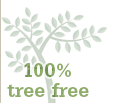Wednesday, June 3, 2009
The Basic Principles of Chinese Traditional Medicine
The Basic Principles of Chinese Traditional Medicine
by George T. Lewith M.A., M.R.C.G.P., M.R.C.P.
Excerpted from Modern Chinese Acupuncture
http://healthy.net/scr/article.asp?ID=1707
I. Yin and Yang
The theory of yin and yang is a kind of world outlook. It holds that all
things have two opposite aspects, yin and yang, which are both opposite
and at the same time interdependent. This is a universal law of the
material world. These two aspects are in opposition to each other but
because one end of the spectrum cannot exist without the other they are
interdependent.
The ancient Chinese used water and fire to symbolize yin and yang;
anything moving, hot, bright and hyperactive is yang, and anything
quiescent, cold, dim and hypoactive is yin.
The yin and yang properties of things are not absolute but relative. As an
object or person changes so the yin and yang components change at a
gradual rate. Each of the yin and yang properties of the object is a
condition for the existence of the other; neither can exist in isolation.
These two opposites are not stationary but in constant motion. If we
imagine the circadian rhythm, night is yin and day is yang; as night (yin)
fades it becomes day (yang), and as yang fades it becomes yin. Yin and
yang are therefore changing into each other as well as balancing each
other.
The Application of Yin and Yang to Chinese Medicine
Each organ has an element of yin and yang within it. The histological
structures and nutrients are yin, and the functional activities are yang.
Some organs are predominantly yang in their functions, such as the
gan-liver, while others are predominantly yin, such as the shen-kidney.
Even though one organ may be predominantly yin (or yang) in nature, the
balance of yin and yang is maintained in the whole healthy body because
the sum total of the yin and yang will be in a fluctuating balance.
If a condition of prolonged excess or deficiency of either yin or yang
occurs then disease results.
To read the full article: http://healthy.net/scr/article.asp?ID=1707
by George T. Lewith M.A., M.R.C.G.P., M.R.C.P.
Excerpted from Modern Chinese Acupuncture
http://healthy.net/scr/article.asp?ID=1707
I. Yin and Yang
The theory of yin and yang is a kind of world outlook. It holds that all
things have two opposite aspects, yin and yang, which are both opposite
and at the same time interdependent. This is a universal law of the
material world. These two aspects are in opposition to each other but
because one end of the spectrum cannot exist without the other they are
interdependent.
The ancient Chinese used water and fire to symbolize yin and yang;
anything moving, hot, bright and hyperactive is yang, and anything
quiescent, cold, dim and hypoactive is yin.
The yin and yang properties of things are not absolute but relative. As an
object or person changes so the yin and yang components change at a
gradual rate. Each of the yin and yang properties of the object is a
condition for the existence of the other; neither can exist in isolation.
These two opposites are not stationary but in constant motion. If we
imagine the circadian rhythm, night is yin and day is yang; as night (yin)
fades it becomes day (yang), and as yang fades it becomes yin. Yin and
yang are therefore changing into each other as well as balancing each
other.
The Application of Yin and Yang to Chinese Medicine
Each organ has an element of yin and yang within it. The histological
structures and nutrients are yin, and the functional activities are yang.
Some organs are predominantly yang in their functions, such as the
gan-liver, while others are predominantly yin, such as the shen-kidney.
Even though one organ may be predominantly yin (or yang) in nature, the
balance of yin and yang is maintained in the whole healthy body because
the sum total of the yin and yang will be in a fluctuating balance.
If a condition of prolonged excess or deficiency of either yin or yang
occurs then disease results.
To read the full article: http://healthy.net/scr/article.asp?ID=1707
Subscribe to:
Post Comments (Atom)






No comments:
Post a Comment